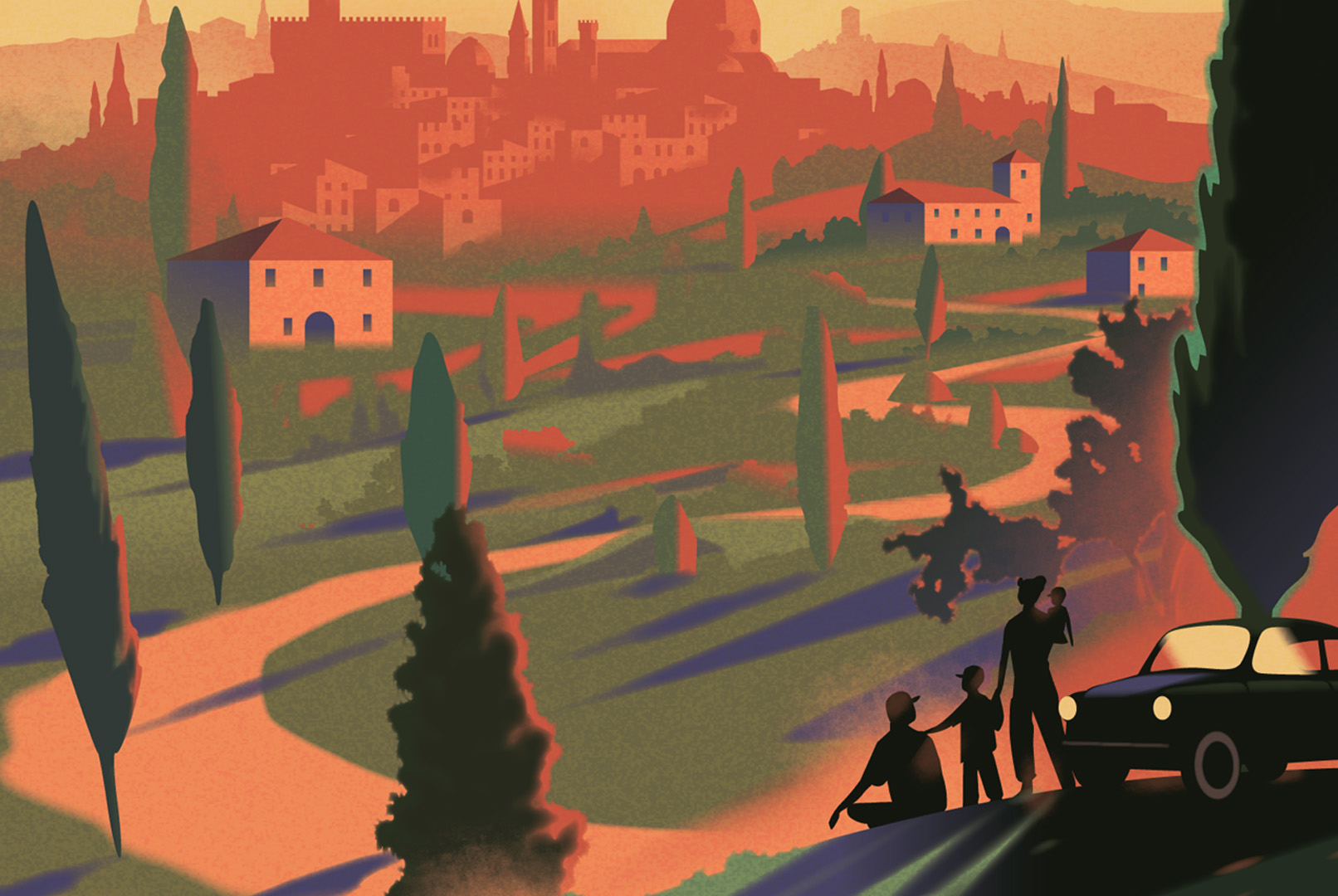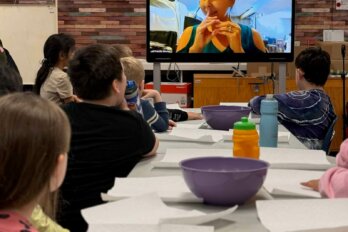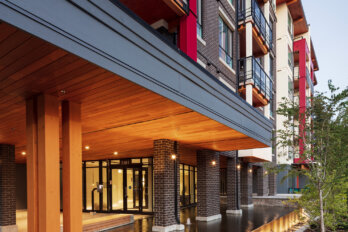Y WE TRAVEL
Why do we travel? For too long, we took this question for granted. Travel can make our large world small, and we forgot what a gift this is until it all got taken away from us not too long ago. Today, we’re returning to the skies in record numbers, but with a more appreciative mindset. It’s a perfect moment to take stock. The contributors to the “Y WE TRAVEL” series are accomplished writers from all walks of life. Over the length of this series, they will explore the diversity of purpose in our journeys—not just where or how, but why. On behalf of Toronto Pearson Airport and the Canadian Airports Council, please enjoy.
The spoiled milk in the back seat was so rancid that we had to keep every window of our rented Fiat open on the winding drive from Rome to Florence. My husband and I had stopped making eye contact thirty minutes before, both frustrated with a situation that smelled—and felt—worse by the minute.
Our two kids, even closer to the putridity, were more vocal about our predicament. “It stinks!” Ethan, our three-year-old, announced repeatedly. Cameron, our eleven-month-old, wailed his discontent. (A fair reaction given that it was his only bottle of milk and it had been overturned by a bump in the road.) Amidst the chaos, I wondered if we’d made a huge mistake.
“Travel has given my kids permission to be their fullest selves—free of the expectations of adults and peers at home who have routinely presumed who they could be and where their limits lay”
This trip was my idea. I always wanted to visit Italy and I was determined to show the world, and myself, that my travels weren’t coming to an end just because I’d gotten married and had a family. But here we were, lost in the Italian countryside, holding our breaths lest we inhale any more of the fetid air in the Fiat. No one was having a good time.
It would be about an hour before we’d stumble on a farmhouse, where we devised a way of communicating that the baby (rocks arms) needed milk (mimics cow milking) and get what we needed from kind strangers to continue our journey. The smell persisted beyond that pitstop, but the wailing stopped, the toddler fell asleep, and the ability to laugh at our situation quickly followed.
Where We Travel

“One of the most memorable trips I’ve ever taken began with a flight to Goose Bay, Labrador (YYR). Goose Bay is a unique Canadian airport that doubles as an air-force base and once famously hosted the US space shuttle, Enterprise, carried by a refuelling 747. But my trip was memorable, too, and quintessentially Canadian: PAL Airlines to the airport, a quick jaunt to the Goose Otter Creek Waterdrome, and then an Air Borealis float plane to the coastal fishing camp at Big River.
Labrador is known as “The Big Land”, and there’s no better place to contemplate the why than from the air. My journey was breathtaking, but I try to remember that this kind of air service is also the only realistic way in and out of many remote communities. Visitors and residents alike rely on the access enabled by these regional airports and airlines, which are portals for fresh supplies, emergency medical care, and yes, the economic benefits of tourism. They may be tiny, but these facilities provide essential services with enormous impact on their communities.”
– Monette Pasher
President, Canadian Airports Council

“I travel frequently for work. But for a short break, I love going to Vancouver Island, whether it’s by prop aircraft from Vancouver (YVR) to Victoria (YYJ), by harbour-to-harbour float plane, or even by ferry. The transportation nerd in me loves the multi-modal travel options, proof positive of how important connectivity is in our country. And once you’re on the Island, almost everywhere you look has a wonderful view, a fantastic park, or a hiking trail, ensuring that tomorrow’s cares can wait.”
– Mike McNaney
Vice-President and Chief External Affairs Officer, Vancouver International Airport
That kind of turnaround has been a common theme in our family travels: you’re on the edge of tears one moment and laughing uncontrollably the next. But then, parenting is always like that. You’re constantly oscillating between being certain that you’ve gotten it right and worrying that you’ve failed beyond redemption. As the mother of a toddler and an infant, I came to figure that if it’s going to be chaotic anyway, why not take the chaos on the road?
It was the best decision I’ve ever made.
Those kids are now twenty-one and nineteen, and for their entire lives, our family of four has continued to roam the planet together. In 2011, we went full throttle and spent a year abroad. Twenty-nine countries and six continents later, my husband and I returned more certain than ever that the values we most wanted to impart in our kids—and the lessons we still needed to learn ourselves—were waiting for us in places we had yet to explore.
The milk incident wasn’t our only trying travel experience. There have been “stop kicking the seat in front of you” and “don’t think I won’t put you in a time out on the side of this mountain” moments. At a waterpark in Dubai, we lost a kid for a harrowing thirty minutes. In Phnom Penh, we had to negotiate for medical supplies in the middle of the night to treat a child’s burns from touching a moped muffler. And we’ve had to convince an “I only eat orange coloured macaroni and cheese” kid to nibble around the spice in their Sichuan noodles. But for each stressful experience, a core memory has been formed. And those reminiscences bring as much joy now as they caused consternation years ago.
This is why as a travel writer, I always encourage families to explore the world together. Once you’ve felt that joy, it feels selfish not to invite others to the party. Plus, those memory-making opportunities, coupled with the education that comes from the vulnerability of not knowing a destination’s language, people, or currency, open us to the possibility of new ways of relying on each other and understanding the world around us. It opens us to the world of “maybe.”
Maybe it is more fun to run without shoes in a Peruvian playground soccer match than to buy the newest Nikes. Maybe the best way to plan a trip to India isn’t by studying the guide book’s recommendations, but by chatting with neighbourhood parents who immigrated from there. Maybe Japanese ice cream in a tube is actually tastier than the cones we use at home. Travelling with kids gives us permission to follow the “maybes,” and so to open ourselves to the possibility that we don’t know it all.
Travel has given my kids permission to be their fullest selves—free of the expectations of adults and peers at home who have routinely presumed who they could be and where their limits lay. But it’s good for us parents, too. Out in the world, our facts are questioned by children who freely, if at times annoyingly, ask “why.” Our beliefs seem less firmly held in places where “normal” is different.
World travel can feel out of reach for families. Financial, physical, and personal hurdles can absolutely make it challenging to venture far from home. So my advice is to expose your family to as much of the world as you can. Take them one block over, explore your community on a bus trip, visit a nearby city, travel to visit family, engage with strangers. Where you can and when you can, make exploring your family goal.
We did it, and after years of doing it, my family is still learning through its travels. We screw caps on our milk bottles much tighter these days, but we still hit bumps. And as much as I love the doing and the going, it’s the remembering that I have come to treasure most. Because there’s something wholly comforting about a memory that relies on four equal parts to be whole.
Heather Greenwood Davis is a Toronto-based writer whose travels with her family have spanned two decades. Find her at heathergreenwooddavis.com or @byheathergd on Instagram.
Explore the rest of the Y WE TRAVEL series.





